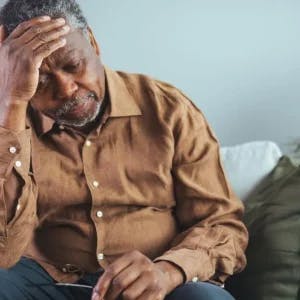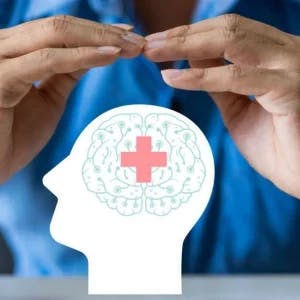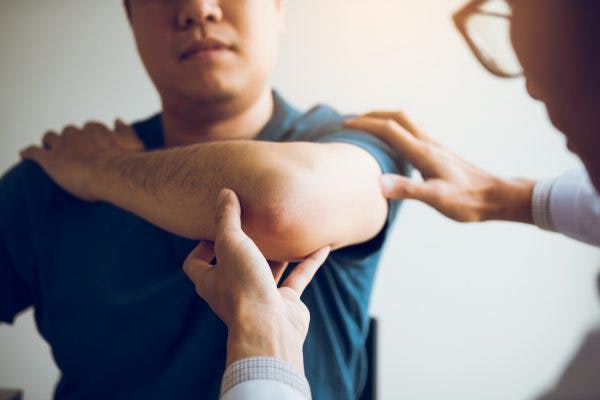Have you ever felt alarmed by muscle twitching after stroke and wondered what caused it? Sometimes muscle twitching is a sign of spasticity, but it could also indicate other issues. For this reason, it’s important to talk to your physician if you’re concerned about muscle twitching after stroke.
This article will highlight the 4 most common causes of muscle twitching and some effective recovery methods.
4 Causes of Muscle Twitching After Stroke
Before we get started, it’s important to know that you should consult your doctor or therapist if your symptoms are accompanied by pain, discomfort, or reduced quality of life. Your doctor can help diagnose your condition and a therapist will guide your rehabilitation.
Here are some common causes of muscle twitching after stroke:
1. Spasticity
If muscle twitches are accompanied by stiffness and difficulty with movement, then it’s likely a symptom of spasticity. In this case, it’s critical to work with your doctor or therapist. Your doctor may prescribe Botox injections to help temporarily relieve spasticity, while your therapist can prescribe stretches and exercises, which help reduce spasticity long-term.
2. Tremors
When muscles twitch in a constant, rhythmic fashion, it could be a sign of tremors. Tremors often have delayed onset after a stroke, which means they can manifest months later. If you think you’ve developed tremors after stroke, talk to your doctor.
3. Involuntary movement disorders
Aside from tremors, there are other involuntary movement disorders that can cause muscle twitches. For instance, some stroke patients may develop muscle twitching from conditions like clonus, chorea, athetosis, or dystonia.
4. The affected muscles are “waking up”
Some stroke patients experience twitching in their affected muscles right before they regain movement, especially in patients with hemiplegia (paralysis of half the body).
If you have been regularly participating in rehabilitation, then muscle twitching could be a sign of recovery. However, it’s impossible to tell, so a conversation with your doctor or therapist is always the safest route.
Treating Muscle Twitching After Stroke
Muscle twitching after stroke can be a sign of progress or problems, depending on the context. Fortunately, treatment is roughly similar no matter what the issue.
We recommend consulting with a physical rehabilitation specialist like a Physical Therapist or an Occupational Therapist to help improve muscle twitching after stroke. They can prescribe exercises or specific stretches to improve blood flow to the affected muscles and even rewire the brain to improve control over your muscles.
If the twitching is caused by spasticity, rehab exercises are well-known to help. Furthermore, if the twitching is a sign of your muscles “waking up,” then rehab exercises will help you maximize your neurological control of those muscles.
However, if muscle twitches are painful or limiting your mobility, talk to your doctor about Botox or medication. This can help relieve the symptoms (like spasticity and muscle tightness) and temporarily improve mobility.
Then, use this increase in mobility to become more active, and provide more stimulus to your brain and muscles. That way, you’re addressing the root problem too.
Wrap Up: What We Know About Muscle Twitches
Overall, muscle twitching after stroke is thought to be a sign of spasticity, but it could indicate other issues.
In some cases, it’s a sign of recovery; and focusing on physical rehabilitation exercises can help you make a good situation even better.
If your twitches are caused by the worsening of a condition, physical therapy can still help. In this case, it’s best to work alongside a trained therapist who can provide a proper diagnosis and treatment plan.
It’s always a good idea to consult with your medical team, especially when new symptoms appear. Best of luck on the road to recovery.















